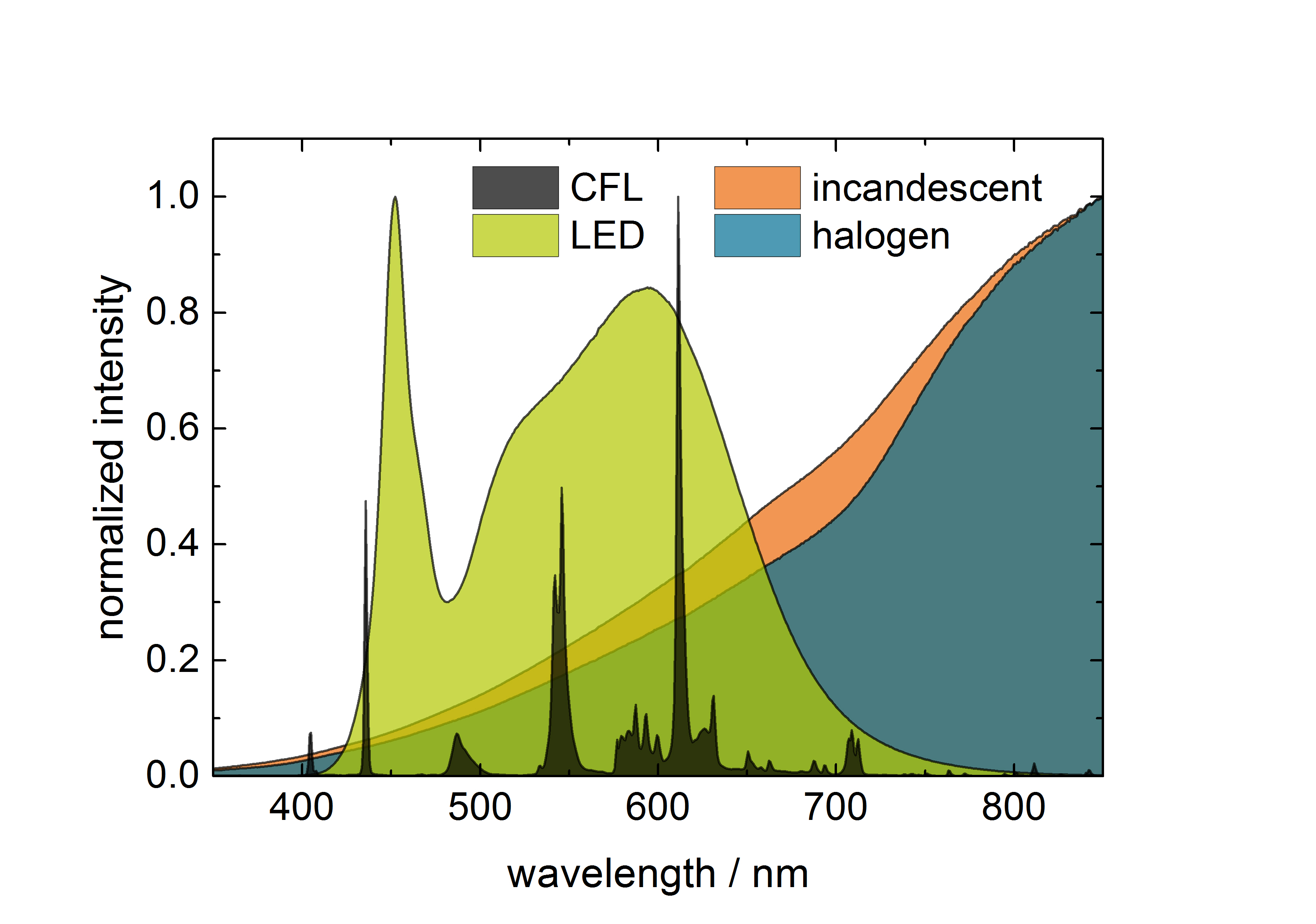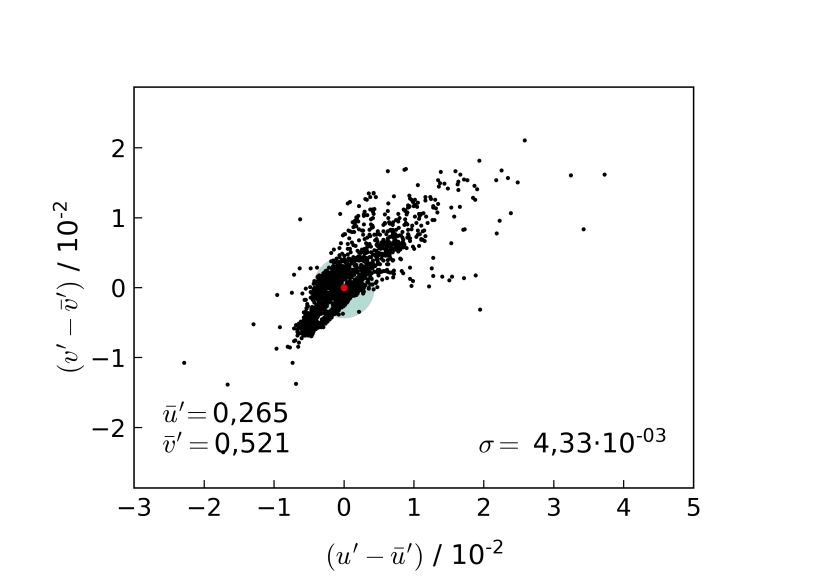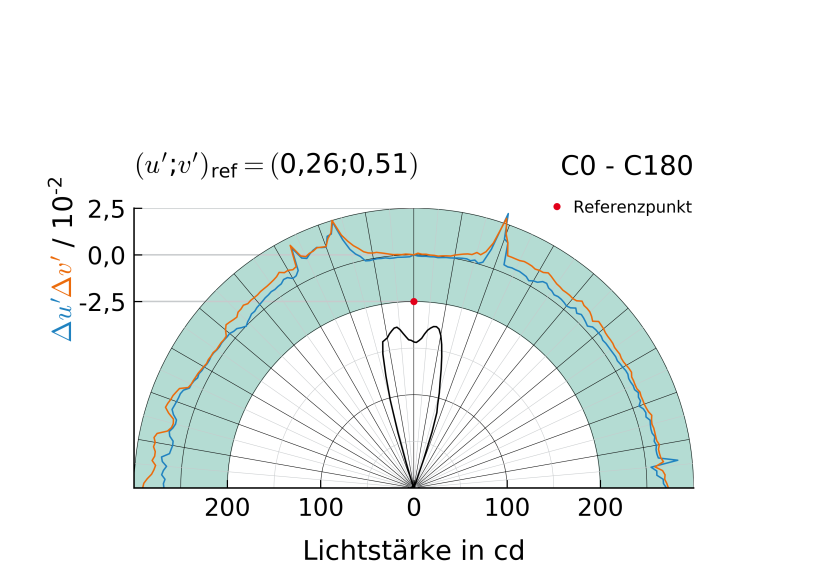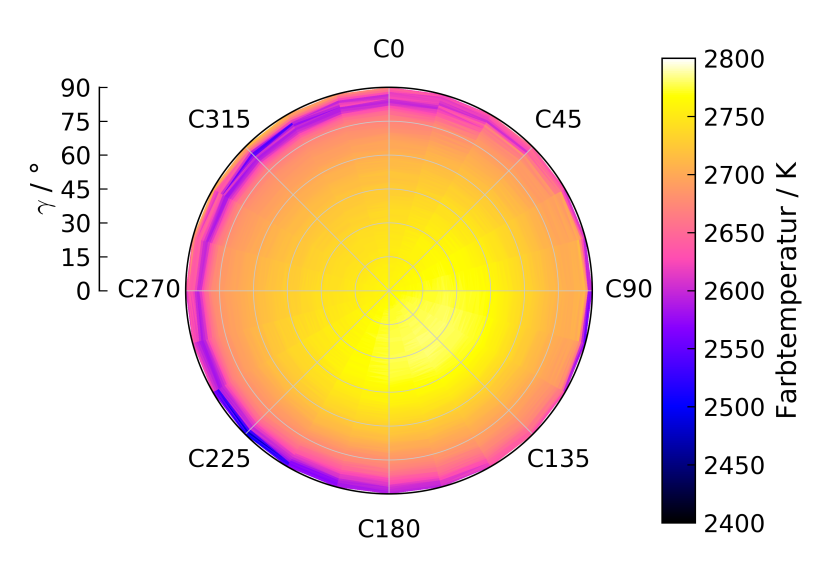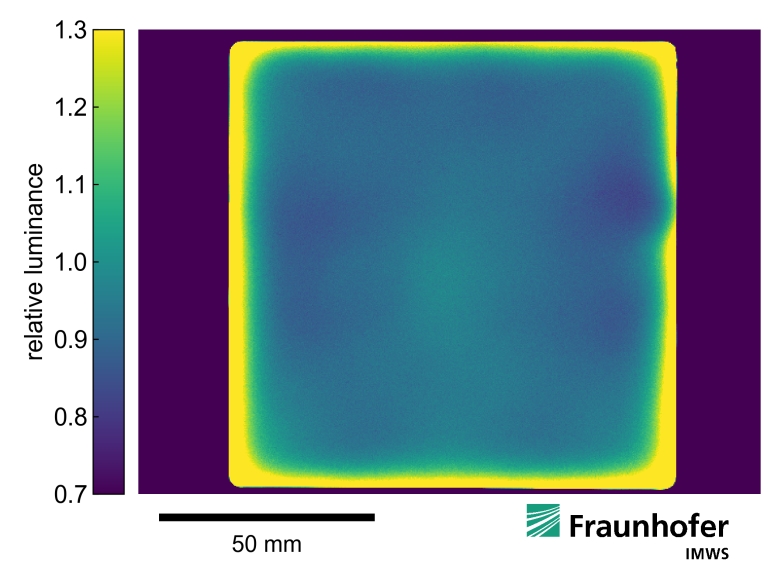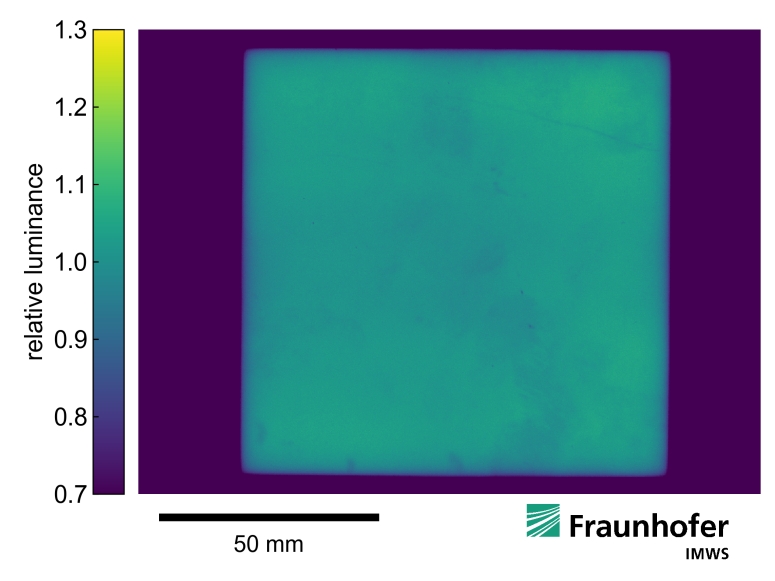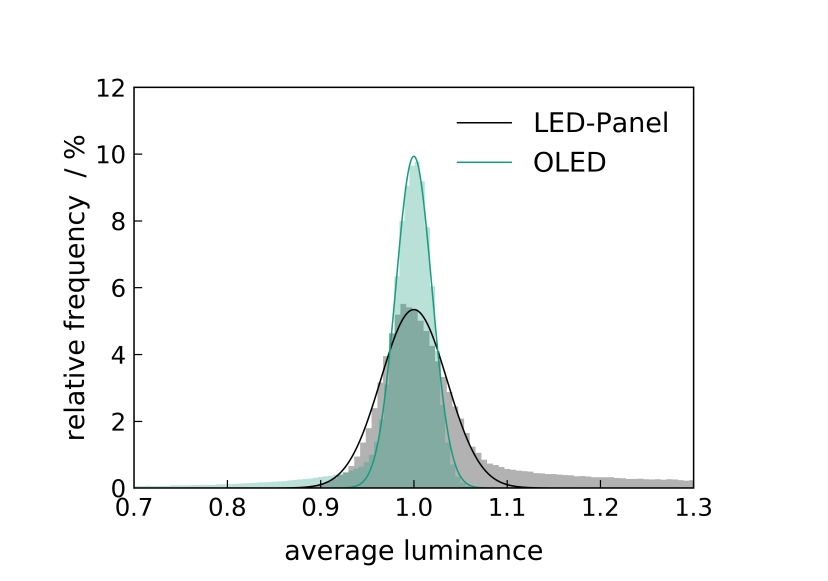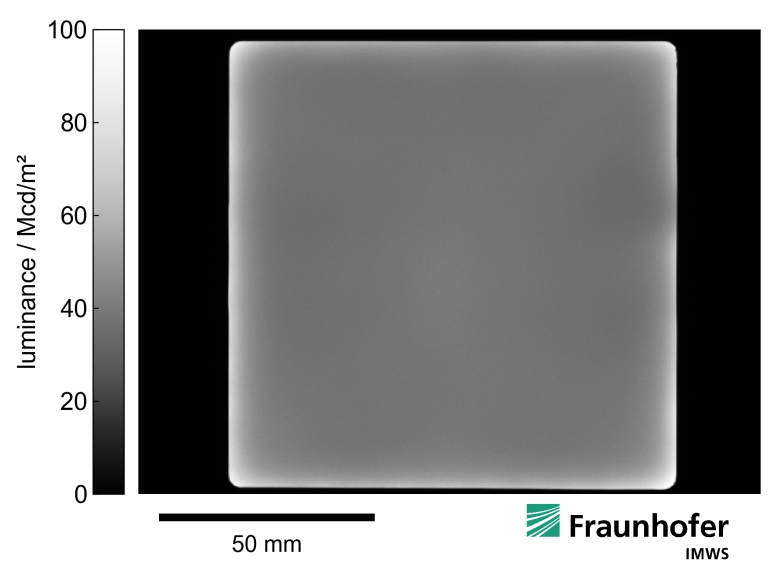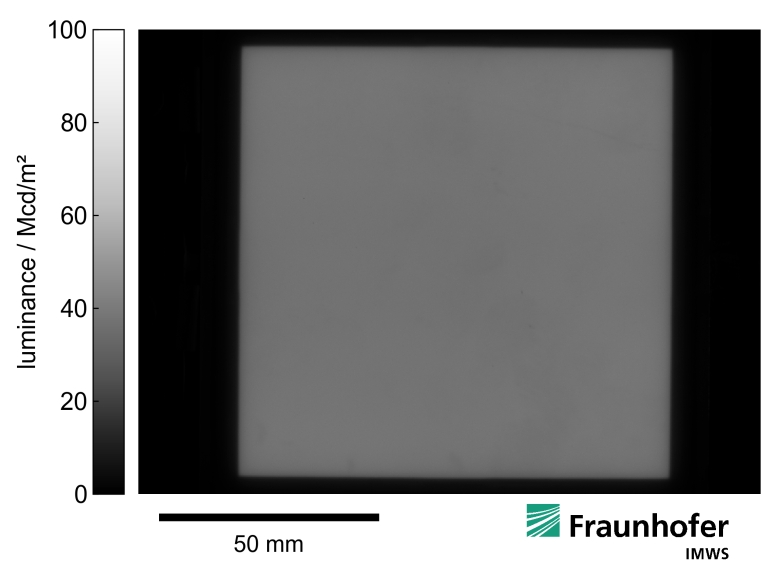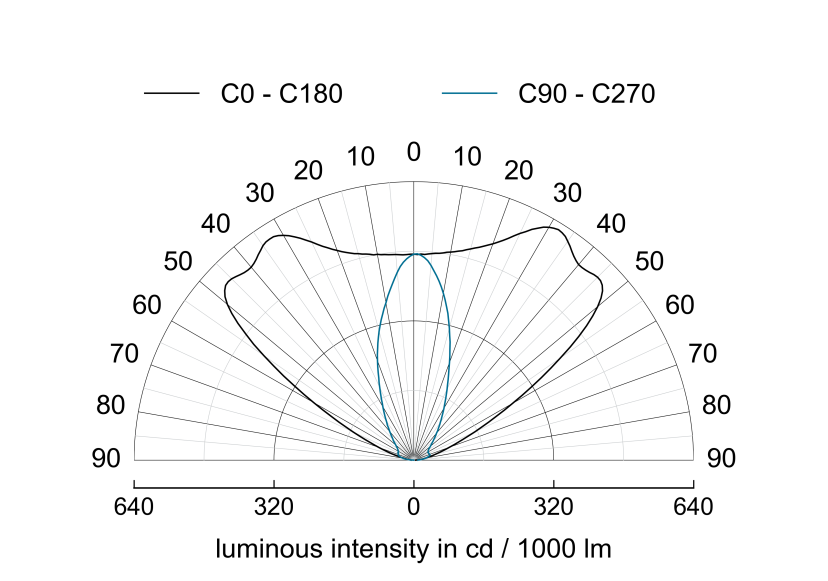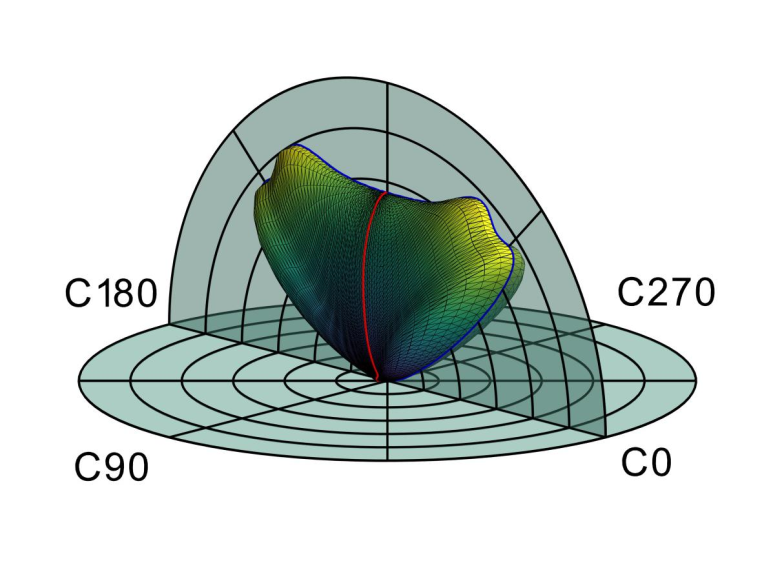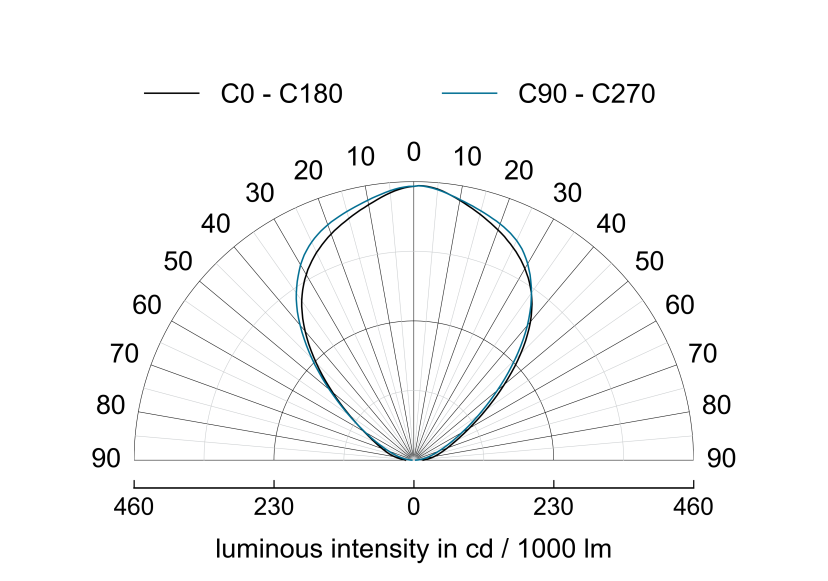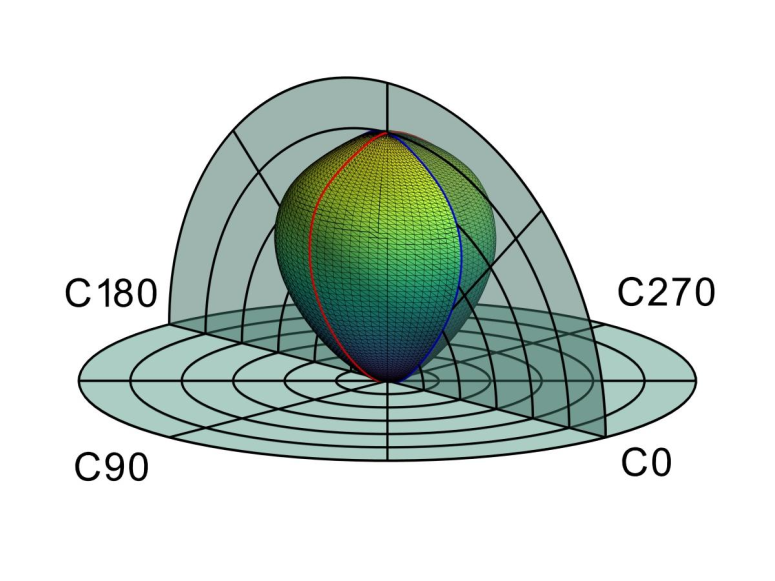For the entire evaluation of a light source its luminosity distribution as well as its emission spectrum plays an important role. The emission spectrum determines how a light is perceived by humans: predominant emission in the blue spectral range leads to a »cold-white« colour impression. If reddish components dominate the spectrum, the light is perceived as »warm-white«. The colour impression is described by the so-called colour temperature which can be derived from the emission spectrum. Another parameter to describe the colour impression is the colour coordinate which can be determined in different colour coordinate systems. The oldest and best known system is the CIE colour space.
Due to the internal construction of a light source and/or the dispersion within the optical components disturbing colour fringes might occur. The latter ones can be described as an angular-dependent shift in colour coordinate within the CIE-LUV colour coordinate system.
The emission characteristics of lamps and luminaries determine not only the colour impression of itself, but also how colours are perceived in the illuminated area. Light sources comprising a few narrow spectral lines (such as fluorescent lamps and energy savings lamps) lead to pale colours; light sources with a wide spectrum (like the sun, electric light bulbs or LEDs) allow a good colour rendering. A quantitative measure of the colour rendering quality is the colour rendering index (CRI = Colour Rendering index). This measure as well as others can be also calculated from the emission spectrum.
The spectrophotometer of the Fraunhofer Application Center for Inorganic Phosphors allows in combination with a goniometer system the measurement of the angularly-dependent emission characteristic of lamps and luminaries as well as the angularly-dependent colorimetric parameters.
